HTC EVO 3D vs. Motorola Photon 4G: Choosing the Best Sprint Phone
by Anand Lal Shimpi on August 17, 2011 11:11 PM ESTSprint customers almost always get the short end of the stick. In exchange for some of the more reasonable smartphone plans in the US, Sprint customers typically enjoy a mediocre selection of phones. Over the years there have been a few that have stood out. The Palm Pre and EVO 4G both come to mind. But generally speaking, all of the cool phones go elsewhere. In fact, the last Sprint phone we reviewed was the Samsung Epic 4G and that was almost a year ago. Of course more phones have debuted on Sprint since then, they just haven't been all that interesting.
Until now of course.
Today we have Sprint's two flagship Android smartphones: the HTC EVO 3D and the Motorola Photon 4G. Despite naming differences both support Sprint's 4G WiMAX network, have dual-core SoCs and boast 4.3-inch screens, but these two are far more different than you'd expect.
The EVO 3D uses a 1.2GHz Qualcomm Snapdragon S3 (MSM8660) and can capture/display 3D content. Meanwhile the Photon 4G is NVIDIA's debut phone on Sprint, featuring a 1GHz Tegra 2 and a high resolution 8MP rear camera sensor.
Before we get too far down the internal comparison, let's talk about the hardware itself first.
| Sprint EVO 3D vs. Photon 4G | ||||
| EVO 3D | Photon 4G | |||
| Height | 127 mm | 126.9 mm | ||
| Width | 66.0 mm | 66.9 mm | ||
| Depth | 11.9 mm | 12.2 mm | ||
| Weight | 170g | 158g | ||
| SoC | 1.2GHz dual-core Qualcomm Snapdragon S3 MSM8660 | 1GHz dual-core NVIDIA Tegra 2 | ||
| GPU | Qualcomm Adreno 220 | NVIDIA ULP GeForce | ||
| System Memory | 1GB | 1GB | ||
| NAND |
4GB NAND internal 8GB SanDisk class 4 microSD preinstalled |
16GB NAND internal |
||
| Display |
4.3" 3D qHD - 960 x 540 LCD |
4.3" qHD - 960 x 540 RBGW PenTile LCD |
||
| Display Output | HDMI via MHL | microHDMI | ||
| Front Camera | 1.3MP | 0.3MP | ||
| Rear Camera | 2 x 5MP 3D w/ Dual LED Flash | 8MP w/ Dual LED Flash | ||
| Battery | Removable 6.57 Whr | Removable 6.3 Whr | ||
| Shipping Android Version | 2.3.3 | 2.3.4 | ||
| Contract Price | $199 ($549 off-contract) | $199 ($549 off-contract) | ||
The physical comparison boils down to personal preference. The Photon has a lighter and more plasticky feel while the EVO 3D feels more dense and higher quality. Both are awkwardly large thanks to their 4.3" screen size, but the matte and textured finish of the EVO 3D actually does make it easier to hold than the Photon.
Where the Photon starts winning back points is with its kickstand. I've always been a fan of integrated kickstands and the Photon's is no exception. It's convenient for anyone that keeps their phone on a desk, uses it as an alarm clock or watches a lot of movies on it. Although I can't bring myself to spend two hours staring at a smartphone screen (even a large one), I know it's something that people do and the kickstand can be quite useful for those folks. Unfortunately you can't control the angle of the kickstand, so if you're super tall and seated in coach it may not be all that convenient.
Stylistically the EVO 3D takes a more conservative but well received approach, while the Photon tries something new with its long-octagon shape. There's nothing gained by Motorola chopping off the corners of the Photon, it's just different.
The Photon's atypical styling extends to the volume rocker as well. While the power/lock button is fairly standard, the volume rocker is textured with horizontal slits. Button presses are not firm but not mushy either.
The EVO's buttons by comparison are more traditional but extremely low profile. The obvious exception being the massive camera shutter release button, which feels good but not as great as you'd expect. It's also slightly disappointing that unlike on a WP7 device, hitting the camera button doesn't automatically bring the phone out of sleep and drop you into the camera app. If the EVO is unlocked and awake however, the button does just that.
To play up the 3D gimmick make it easier to switch between 2D and 3D shooting modes there's a physical toggle switch on the EVO 3D, next to the shutter release button. You only need the toggle for capture, when playing back content the display automatically switches between 2D and 3D modes.
Pulling off the back cover is far easier on the Photon. The EVO 3D makes you pull a little too much and some of the notches don't seem like they want to let go. Unlike some more recent HTC phones, the EVO 3D doesn't include any antennas in the rear cover - everything is baked into the body of the phone.
Both phones feature a removable battery. The EVO 3D has a 6.57 Wh unit while the Photon 4G's battery weighs in at 6.3 Wh. Behind the battery is a microSD card slot (with an 8GB card) on the EVO 3D. The Photon 4G on the other hand comes with no microSD card installed (but 16GB of NAND on-board) in addition to a SIM card. The Photon 4G includes a Qualcomm MDM6600 that gives it HSPA+/GSM support. The full list of supported networks and frequencies is below:
| Network Support | ||||||
| Total System Power | WiMAX | CDMA | WCDMA | GSM | ||
| HTC EVO 3D | 2.5 - 2.7GHz | 800/1900MHz | N/A | N/A | ||
| Motorola Photon 4G | 2.5GHz | 800/1900MHz | 850/1900/2100MHz | 850/900/1800/1900MHz | ||
If you're in need of a phone that can be used overseas, the Photon 4G is your only option of these two. The EVO 3D can only work on Sprint's CDMA and WiMAX networks.
The EVO 3D and Photon 4G both support HDMI out but through very different approaches. Motorola uses a standard micro HDMI connector, while HTC uses a MHL USB connector. When used with a standard USB cable the MHL USB connector acts like a normal micro USB port for charging and data transfer. If you've got an MHL to HDMI cable however you can get HDMI out of the phone. Unfortunately neither company ships their phone with the appropriate cable to get video output. With the right cable both phones support mirroring over HDMI.















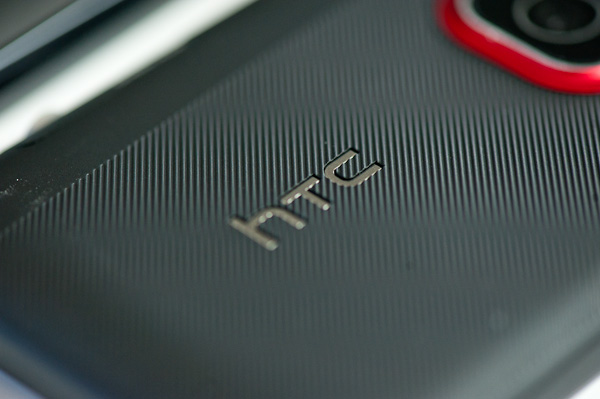
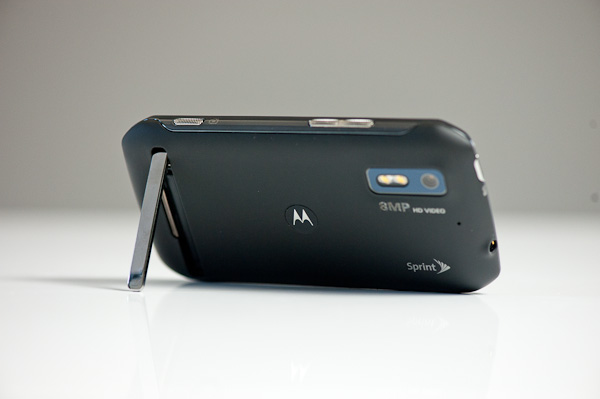
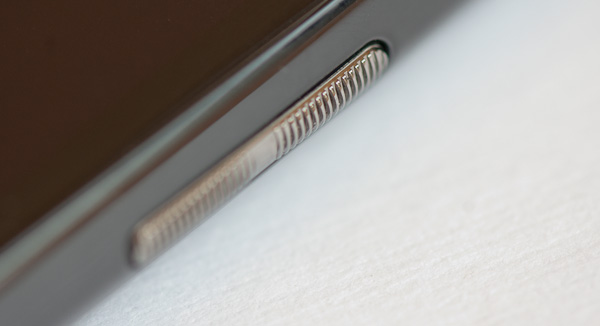
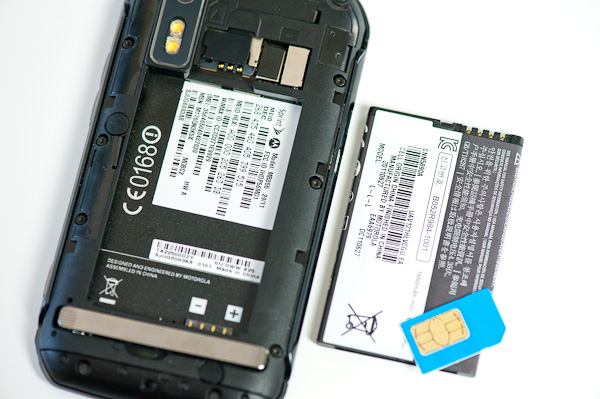
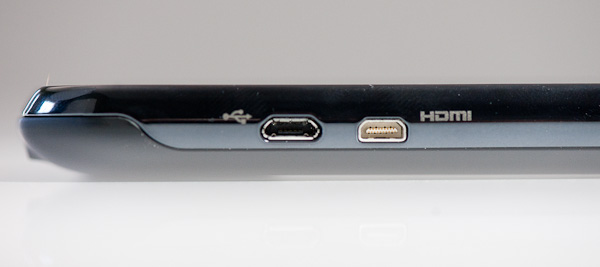








43 Comments
View All Comments
anactoraaron - Thursday, August 18, 2011 - link
With all of the new dual core phones hitting the shelves, there are a few 'budget' phones using 'yesterday's' high end tech. I would love to see a few reviews- or maybe just a 'android budget phone roundup' or something. I recently purchased a Samsung Exhibit 4G and love it! There's plenty of single core snapdragons and a hummingbird in the wild on the cheap and it would be great to put them against each other. Obviously you are limited to what you have (or are sent to review) but jus sayin.Reikon - Thursday, August 18, 2011 - link
I don't really get the point of getting a budget smartphone on a postpaid carrier. You might as well go prepaid, which has much cheaper monthly plans with phones comparable to budget postpaid phones.Impulses - Thursday, August 18, 2011 - link
Yeah, saving $100 or even $200 on a phone over the course of two years when you're paying $80+ a month for service just seems silly... Unless you pay for your phone but not service (families, companies, etc.), then I could see it. Or if you switch carriers a often, but I don't see how anyone manages that with the current ETFs.Impulses - Thursday, August 18, 2011 - link
Darn Anand, had I known you kept delaying the EVO 3D review to compare it directly with the Photon I would've stopped badgering you about the review... And possibly waited before buying the EVO 3D! Reading now...Impulses - Thursday, August 18, 2011 - link
I wasn't being sarcastic btw, I'm glad you combined the articles. Although, after all is said and done, I'm not sure I would've had an easier time deciding had i read your article before buying.Just looking at the battery results I can see why you would have trouble picking between the two... 3G browsing time is most important to me as we're unlikely to see 4G here in Puerto Rico anytime soon (they're testing but only in very limited areas), and I don't talk a lot on the phone... Still, the Photon has a large lead in the Wifi battery test.
It surprises me that there can be such drastic differences back and forth between the two, and even between the EVO and Sensation. Can the software stack play such a large role or is it network issues? The Photon's drop from Wifi to 3G is more than 2x but the GSM Sensation does so much better on 3G than the EVO, could that be a matter of HSPA+ speeds allowing it to finish loading and sleep sooner?
Personally I haven't been able to get more than 3.5-4.5 hours of screen-on time out of my EVO 3D, while doing nothing but web browsing, be it 3G or Wifi... Even when sitting one rom over from a router and an Airave. I'd love to be able to squeeze 6+ as your test suggests. Maybe it's a screen brightness issue, at home I read a lot in dimly lit rooms...
Impulses - Thursday, August 18, 2011 - link
I've noticed you're wearing glasses in some of your pictures btw, myopia? I have like -3.5 and I often take off my glasses to read on my phone when I'm sitting down (or to read in general)... Anyway, it seems that even tho I don't need glasses to read at a certain distance (i shouldn't, I'm not near sighted at all) I do need them to be able to appreciate the 3D screen at all.Was just wondering if you noticed that and/or may have an explanation... The 3D effect is barely noticeable without my glasses, soon as I put them on things just pop out, but I'm looking at the screen at a distance where I normally don't need glasses to read, seemed weird to me.
Also did you notice any jumpyness with the text input cursor? That and the build of Swype included on the phone both seem very buggy to me, but the text cursor thing happens even with the stock keyboard. I'll probably root it soon and try the latest Swype beta. It's kinda ridiculous that Swype can't update built-in installs themselves and have to squeeze their updates into full manufacturer OTAs.
Impulses - Thursday, August 18, 2011 - link
Err, the part about not being nearsighted there should've said farsighted.ilkhan - Thursday, August 18, 2011 - link
Page 1"Both are awkwardly large thanks to their 4.2" screen size"
Both are speced at 4.3" :)
Nor would I call my 4.3" EVO 4G awkwardly large.
Anand Lal Shimpi - Thursday, August 18, 2011 - link
Fixed :)For sure it's a personal preference thing. I do believe on Android the sweet spot is somewhere in the 4 - 4.3" range, but for someone coming from a Nexus One for example both of these could feel awkwardly large by comparison :)
Take care,
Anand
Mumrik - Thursday, August 18, 2011 - link
"they just haven't been all that interesting.Until now of course.
"
Anand, did you pull a Jeremy Clarkson on purpose?
:-D